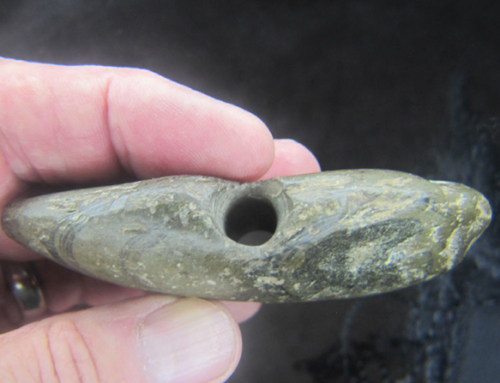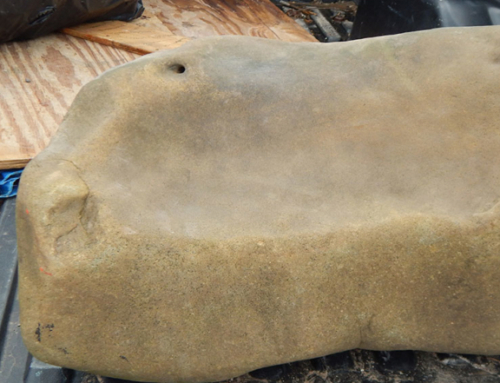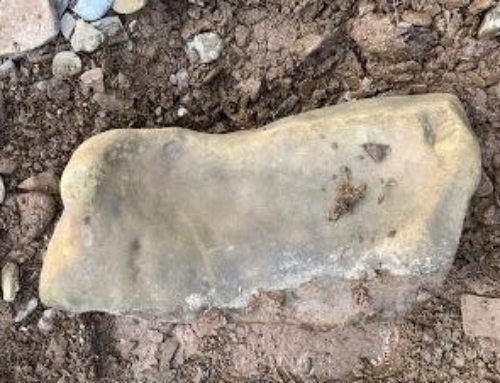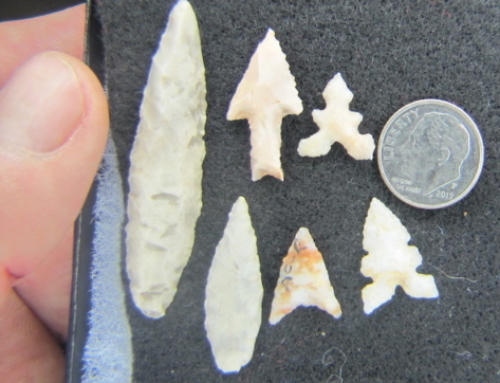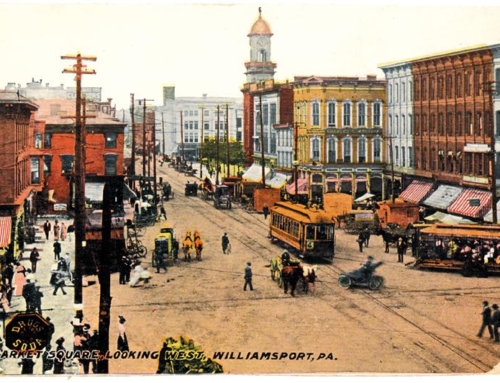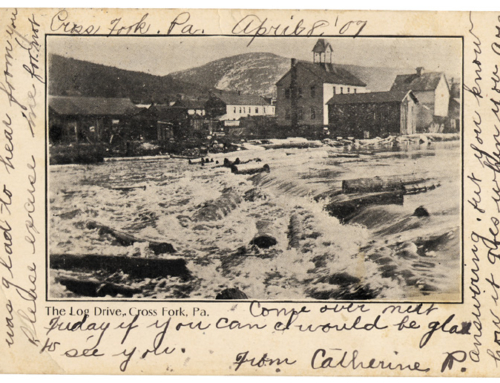Executions weren’t always such a subject of controversy. Individual counties handled the grim task themselves in many cases. Lycoming County was no exception to this but, surprisingly, the first hanging conducted under the auspices of the county judiciary did not occur until 1836 some 41 years after the county was organized in 1795.

‘Murder at Muncy Creek’ details the Earls murder trial.
The lurid story of the circumstances surrounding the event read like something from today’s tabloid press. It interested Marshall Anspach, who presented his research in a paper presented to the Muncy Historical Society in 1944. His findings tell the controversial story of John Earls, an illiterate man who had little or no education. He eked out a living as a fisherman and lived hand-to-mouth about five miles below Muncy along the banks of the Susquehanna River near the southern slope of the Muncy Hills.
His marriage to his wife, Catherine, was a troubled one, punctuated by many acts of violence by him. Earls was in love with another woman, named Maria Moritz. It is reported that Earls repeatedly told his wife “that if she could hug and kiss like Maria Moritz he would love her a great deal better.” Anspach writes in a piece of classic understatement that, “this could scarcely make for piece in any household.”
On Oct. 15, 1835, Earls bought a quantity of white powdered arsenic from the Bruner and Dawson Apothecary in Muncy. He initially claimed that he bought the arsenic to kill minks and muskrats because they would attack the fish basket that he used during his fishing. According to his subsequent confession, he placed the arsenic in some chocolate as it was heating on the stove. Mrs. Earls consumed some of the chocolate and soon became sick from the poison. Earls compounded his fiendish act by placing some more arsenic in the mint tea that his wife was taking to help recover from her previous dose of poison.
The final dose of arsenic proved to be the coup de grace and Mrs. Earls finally died in great agony from the poison. She was buried two days later. Immediately, Earls fell under suspicion for his wife’s death. Two days after Mrs. Earls’ death a Coroner’s Inquest was convened. Catherine Earls’ body was then disinterred and an autopsy was performed that showed conclusively that she had been poisoned. Earls was immediately arrested.
Earls was placed on trial in February 1836. Anson V. Parsons, William Cox Ellis and Robert Campbell represented him. Anspach writes the “trial is one of the longest on record in this county.” It ran from Feb. 3 to Feb. 15, 1836. This seems remarkably brief for a capital murder trial by today’s standards. A spirited defense was carried on for Earls. Fifty-seven witnesses were called. Much testimony was heard about Earls’ abusive treatment of his wife and, of course, medical evidence was shown that that Mrs. Earls died of poisoning.
The trial was a major event in the area causing much excitement drawing spectators from miles around. Finally, the jury returned a guilty verdict after an evening of deliberations. The court sentenced Earls to death the morning following the verdict.
On March 30, 1836, Governor Ritter signed Earls’ death warrant and he was to be hung on May 24, 1836. Three days before he was due to be executed, Earls dictated a confession admitting his role in his wife’s death. It read, in part, “I had in view for several months before her death, to get clear of the encumbrance of my marriage to her, by taking her life.” He continued, “It was my affection for Maria Moritz that induced me thus wickedly and feloniously to take the life of my wife at the time I did.”
Around 1 p.m. May 24, 1836, Earls, accompanied by the sheriff, his deputies, the Deputy Attorney General who prosecuted the case and escorted by a company of volunteer militia, went to the gallows. According to the “Lycoming Chronicle” account of May 25, 1836, “At 20 minutes before 3 his (Earls’) arms were pinioned by the sheriff amid cries of agony, lamentations and tears.” At 2:45 p.m., a hood was placed over Earls’ head. The sheriff struck an axe to a rope that held the drop at 2:56 p.m. and the deed was done.
The account continues, “The fall immediately broke his neck: a slight struggle and all was over; nothing was heard but the heaving of his breath in the throes of death. Immediately after the blow, the sheriff sank entirely overcome by his feelings and the sternness of the officer was lost in the kindness of the man.” Earls remained hanging from the gallows for about 20 minutes until he was pronounced dead by a physician. He then was cut down and placed in an open coffin in the front of the jail where people had the opportunity to see the remains of this nefarious wrongdoer. He then was buried in the rear of the jail yard.
By Lou Hunsinger Jr., Williamsport Sun-Gazette
‘Murder in Muncy Creek’ Book Review
By Cindy Knier
“…at two o’clock the courthouse bell was tolled when the unfortunate man was taken to the scaffold. … At a quarter before three the bell tolled again when the cap was drawn over his face by the sheriff … and at about four minutes before three o’clock, the death-dealing blow was struck, which severed his connection with everything earthly…”
-Lycoming Chronicle, May 25, 1836
Like any truly compelling mystery, “Murder in Muncy Creek” had me asking questions at every turn. Did John Earls really poison his wife? (And if he did, why would he purchase arsenic in front of all those people, who would later help convict him? You would think he’d have been more discreet). Was his mother his accomplice?
How could no one have stepped in to help an obviously abused woman? What happened to all of the children when both of their parents were dead? And what ever happened to Maria Moritz – John Earls’ alleged mistress?
“Murder in Muncy Creek” by William and Peggy Bailey answered all my questions and more, as it followed the investigation, trial, and eventual conviction and hanging of John Earls, who had the unfortunate distinction of being the first man to be hung hanged in Lycoming County. I felt like I was re-living a piece of history, as I poured through the pages of testimony, closing arguments, a last minute confession, and an eyewitness account to the hanging itself. Tuesday, May 24, 2011 marks the 175 thanniversary of the hanging of John Earls, for the murder of his wife, Catharine (Thomas) Earls.
In the 1830s there were no domestic violence shelters. No emergency hotlines. Almost no resources for victims of domestic abuse. Several witnesses in the murder trial of John Earls gave accounts of both threats and acts of violence toward Catharine Earls, and she certainly would have benefited greatly from these things, and may have even survived to see her children grow up had they been available to her.
This book is thorough enough to satisfy the most avid history buff, intricate and personal enough to spark the interest of the amateur genealogist, and tantalizing enough to intrigue anyone’s inner CSI detective.
“Murder in Muncy Creek” can be purchased at the following locations and websites: Muncy Historical Society, 40 N. Main Street Muncy, PA 17756 www.MuncyHistoricalSociety.org; Thomas T. Taber Museum Store, 858 West Fourth Street Williamsport, PA 17701 email: lychsstore@verizon.net; Otto’s Bookstore, 107 West Fourth Street Williamsport, PA 17756 email: ottobook@comcast.net.


